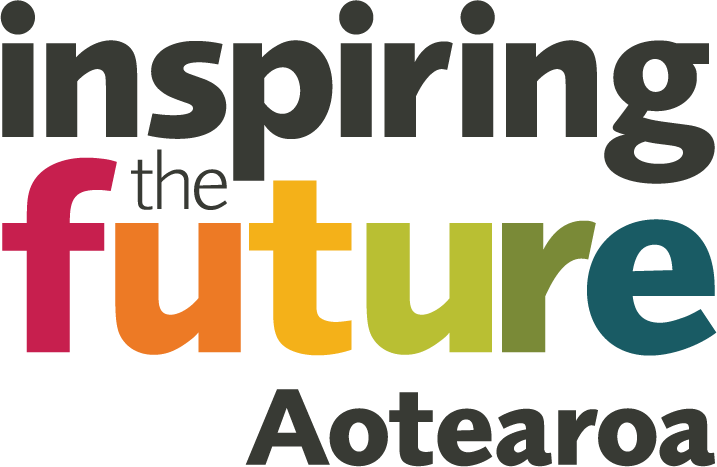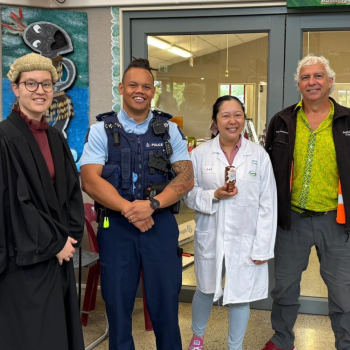For Inspiring the Future to be most effective, we recommend having 1 role model to 8 students to ensure meaningful interactions. Ideally, divide larger events into multiple sessions or run them over several days.
However, we understand this isn't always possible, and there are ways to adapt the event format to suit your needs.
Below are some tips for organising events with larger groups of students, followed by case studies that show how to run a larger event so all students benefit.
Tips for organising larger events
Here are some effective strategies to ensure your larger events run smoothly and give all students meaningful experiences.
Several mini Inspiring the Future events
Divide students into groups (each group could have between 1 and 3 classes). Host a mini Inspiring the Future event with each group, with say 3 role models. You could run these at the same time in different classrooms, at different times on the same day, or across a few days.
Parallel activities
While half the students are participating in discussion groups, the other half can be in a nearby classroom or another part of the hall. They can do another careers activity, for example, create a CV highlighting their top skills, passions, interests and favourite subjects, then brainstorm potential careers that align with these. Using career resources can help students think about their future aspirations, values and achievements.
View the Careers.govt.nz resources for ideas.
Q&A/panel sessions
Instead of smaller discussion groups, host a larger Q&A or panel session with all role models at the front. Pass a microphone around so students can ask in-depth questions. Encourage students to prepare some burning questions about jobs, industries and career pathways in advance. This format allows for a broader range of insights and interactions.
Case study: Newlands Intermediate Inspiring the Future event
Newlands Intermediate recently held an Inspiring the Future event with 260 students. Their aim was to give as many students as possible the opportunity to interact with local role models. The event was designed to foster inspiration and learning through direct interaction and discussion.
Event structure
- Participants: 260 students
- Role models: 12
- Group division: Students were divided into 4 classrooms and 3 role models were assigned to each classroom for their own smaller Inspiring the Future event.
Execution
- Classroom interaction: Each classroom hosted 3 role models, allowing for more intimate and focused discussions. Although students did not get to meet all the role models, the smaller group size allowed meaningful conversations and ample time for questions.
- 20 questions activity: They started with the 20 questions part of the event, where students ask the role models questions to try and guess their jobs. At the end of the session, students told the role models their guesses.
- Break: After the guesses, role models returned to the staff room for a tea break, and to change into their uniform or grab their prop.
- Reveal and Q&A: The role models returned to the same classroom and revealed their jobs, followed by a Q&A with all the students in the classroom, instead of breaking into discussion groups. The teachers had prepared the students for the Q&A sessions by giving them question prompts (see our Discussion group prompt cards for ideas).
- Logistics: A dedicated student from each classroom escorted the role models between the staff room and their respective classrooms.
Outcomes
- Enhanced engagement: The smaller group sizes led to more personalised interactions, enabling students to engage deeply with the role models.
- Student leadership: Having particular students in logistical roles promoted leadership and responsibility among students.
- Community connection: The event strengthened the bond between the school and the local community, showcasing the diverse experiences and expertise of the role models.
Conclusion
The Inspiring the Future event at Newlands Intermediate gave students valuable insights and inspiration from local role models. The structured approach and involving students in organisational roles contributed to its overall success.
Case study: Greenmeadows Intermediate School Inspiring the Future event
Greenmeadows Intermediate organised an Inspiring the Future event with 400 students and 16 role models. They planned the event carefully to ensure smooth interactions and meaningful experiences for both students and role models.
Event structure
- Participants: 400 students
- Role models: 16
Execution
- Arrival and reception:
- Role models were well looked after. They were greeted at the gate and escorted to reception, then to the professional learning and development (PLD) room for tea and coffee.
- The career advisor explained the day's organisation, provided timetables, and briefed the role models on emergency procedures.
- 20 questions:
- Students were split into 4 groups in separate locations, and each group did the 20 questions activity with 4 role models.
- One teacher led the activity, while another kept track of the questions and answers.
- Once the 20 questions were completed, students used the information to guess the role models’ jobs.
- Role model presentations:
- A teacher escorted role models to the hall changing room to change into their work clothes or grab their prop. They then returned to their 20 questions location and student group.
- After revealing their occupation, each role model had up to 5 minutes to talk to the students about their career and experiences.
- Lunch break:
- Role models had refreshments and lunch in the PLD room.
- Students moved to their discussion group classrooms.
- Discussion groups:
- Students were split into 16 groups, with 1 role model per classroom.
- Each classroom discussion group included a 5-minute presentation from the role model, followed by 5 minutes of Q&A.
- Students then moved to another classroom and repeated the process with another role model.
- Closing ceremony:
- Students and role models returned to the hall, where the school thanked and farewelled the role models.
Outcomes
- Enhanced interaction: The structured activities allowed meaningful engagement between students and role models. Role model feedback corroborated this.
- Student involvement: Students actively participated in discussions and Q&A sessions, gaining valuable insights.
- Community connection: The event strengthened ties between the school and the local community, showcasing diverse career paths and experiences.
Conclusion
Greenmeadows Intermediate’s Inspiring the Future event gave students valuable learning opportunities and inspiration from local role models. The well-organised structure and active participation of students and staff contributed to its overall success.
Feedback from a role model on an event at Trentham school with 200 students:
"Today’s talks to the groups were conducted in separate classrooms with teachers present and this worked really well rather than having all the groups in one hall with lots of noise and distractions for the students. They seemed to be much more focused and controlled by having their teachers present."
Log in using your Education Sector Logon here and start creating events at your school.

